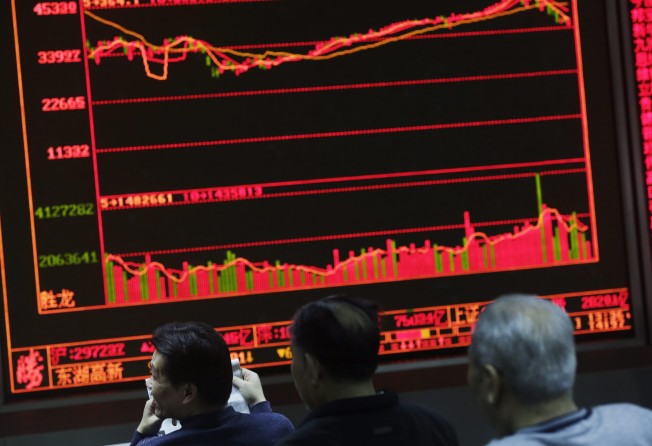Foreign institutions looking for A-share bargains
17 trading accounts were opened by QFII investors in December, with RQFII institutions opening 14 accounts

Market gyrations haven’t necessarily deterred foreign institutions from investing in mainland A shares, with some asset managers starting to hunt for bargains amid weak market sentiment.
A market rout between mid-June and August that wiped out as much as US$5 trillion of capitalisation resulted in a sell-off across global bourses battered by fears of a potential financial crisis in the world’s second-largest economy.
The two trading suspensions caused by the now abandoned circuit breaker system in the first week of this year exacerbated the bearish sentiment in the A-share market, and could have been expected to dim the outlook for the qualified foreign institutional investor scheme (QFII) and the yuan-denominated RMB qualified foreign institutional investor (RQFII) scheme.
“Foreign institutions are taking a different approach from the domestic investors,” said Dong Jun, a Shanghai-based hedge fund manager. “There are signs that some of them have begun to seek good buys in A shares.”
China Securities Depository and Clearing said 17 trading accounts were opened by QFII investors in December, with RQFII institutions opening 14 accounts.
The establishment of new accounts reflects foreign institutions’ increasing interest in A shares, which have been on a roller-coast ride.
Beijing launched the QFII scheme in 2002, allowing a few select foreign institutions such as UBS and Goldman Sachs to convert foreign currencies into yuan for purchases of mainland shares.
Total QFII quotas distributed to qualified institutions quadrupled to US$81 billion by last month.
The foreign-exchange regulator set an overall US$150 billion QFII quota for overseas institutional investors.
In 2011, mainland regulators launched the RQFII scheme, which allows overseas institutions to raise offshore yuan to buy A shares and mainland bonds.
At the end of last month, 444.3 billion yuan of RQFII quota had been used, out of the 970 billion yuan earmarked for foreign investors.
Last month, two Canadian pension fund managers – Canadian Pension Investment Board and Ontario Pension Board – became the latest RQFII players after receiving approval from the China Securities Regulatory Commission (CSRC).
“This represents a step forward for the RQFII scheme as we have seen asset managers, insurers, sovereign wealth funds, and now pension managers all use the channel to actively enter China’s financial markets,” fund consultancy Z-Ben Advisors said in a report.
A Hong Kong-based fund manager said QFIIs and RQFIIs that exited before the A-share market peaked in mid-June were considering a return to the beleaguered market, where some solid stocks appeared to be undervalued.
“A clutch of funds that took profits before the boom-to-bust threshold in mid-June are seeing new investment opportunities in A shares,” the fund manager said. “They always pre-empt domestic investors in sniffing out golden chances.”
The benchmark Shanghai Composite Index closed at 2.976.69 on Wednesday, more than 42 per cent off its 5,166.35 peak on June 12.
The QFII’s rising interest in A shares represents a U-turn after several institutions, including Barclays and Commerzbank, handed back more than US$800 million of QFII quota between April and September last year.
The CSRC said it was a long-term strategy to encourage foreign institutional buying via the QFII and RQFII schemes.
When Beijing introduced the QFII programme 14 years ago, the mainland regulators were aiming to set a healthy tone for the volatile market, believing powerful institutions that bought shares on valuation would help educate unseasoned individual investors who chased short-term gains on rumours.
QFIIs proved to be astute in finding stocks with huge earnings potential and quick in dodging risks when the market became frothy.
The total investment by QFIIs and RQFIIs accounts for less than 3 per cent of the mainland’s market capitalisation. But their investments in the mainland market are usually seen as pioneering moves that could decide the direction of key indicators.
UBS predicts the CSI 300 Index, which tracks the mainland’s 300 largest stocks, will hit the 3,700-point level this year, 16.5 per cent higher than Wednesday’s close of 3,174.38.
“QFIIs buy shares when they feel the stocks are worth of the prices,” said Chen Qiang, a veteran retail investor. “I would believe them and start to load up on shares from now.”